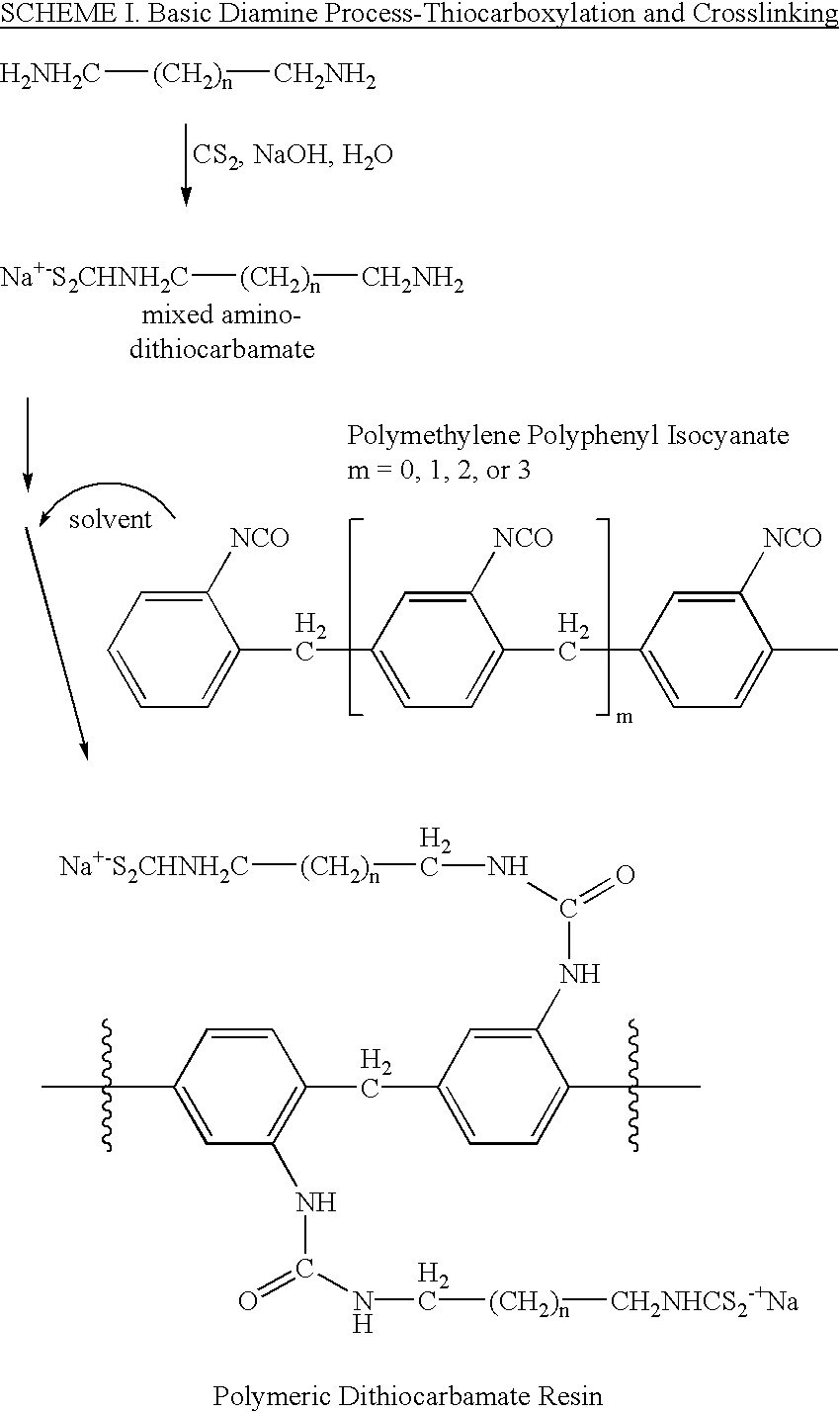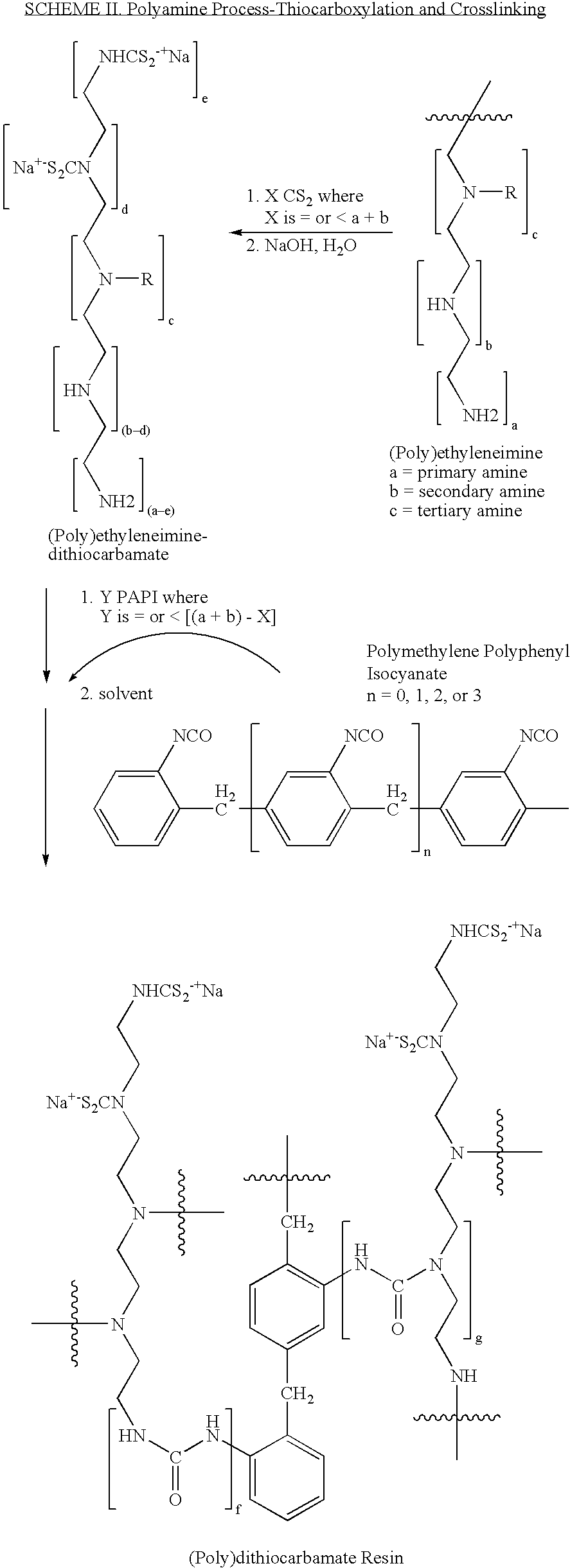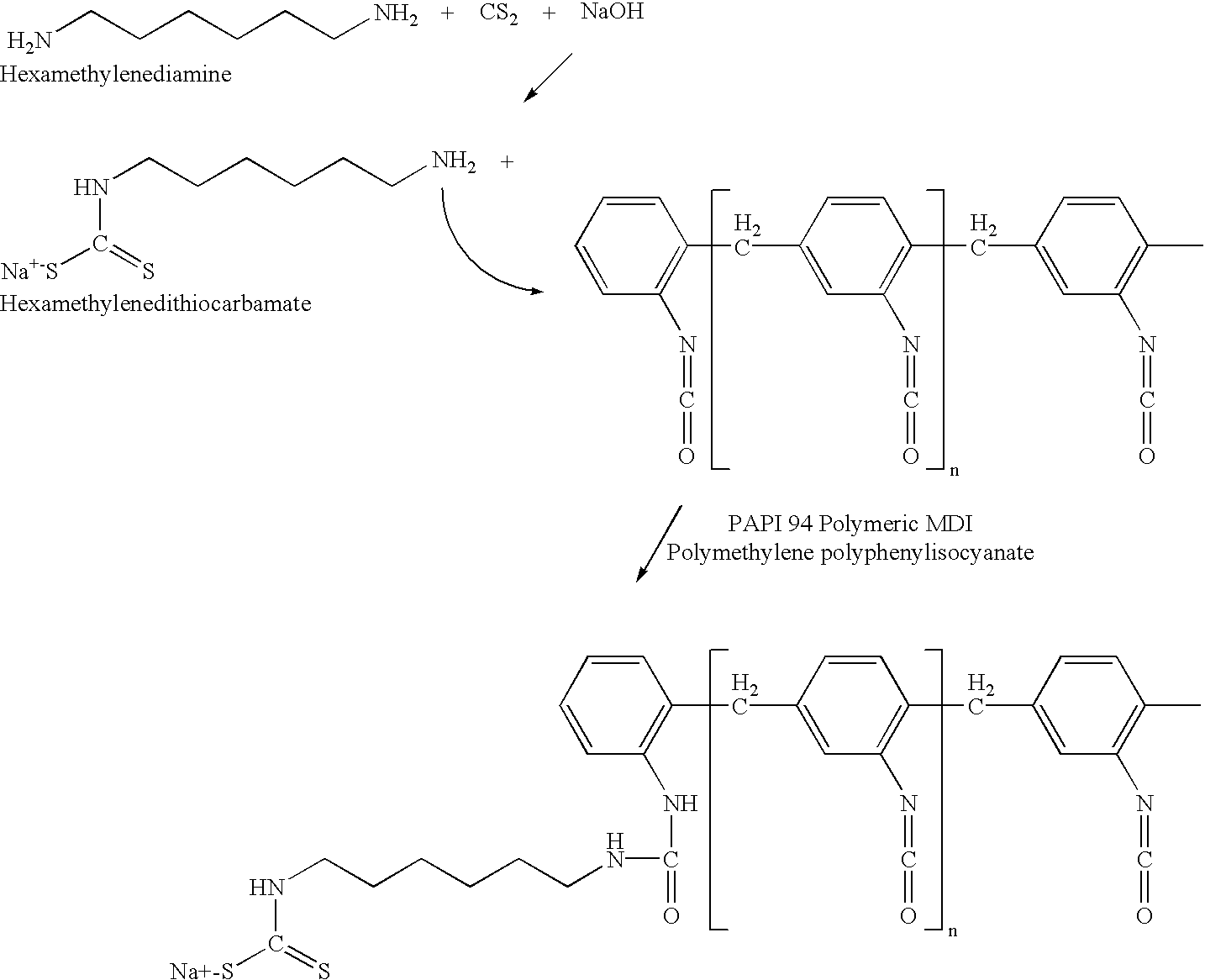Polydithiocarbamate resin
a technology of polydithiocarbamate and resin, which is applied in the direction of water/sewage treatment by ion exchange, separation process, water/sewage treatment, etc., can solve the problem of unacceptably low effluent passing through the resin, removal of cationic contaminants, and inability to meet the requirements of industrial processes
- Summary
- Abstract
- Description
- Claims
- Application Information
AI Technical Summary
Benefits of technology
Problems solved by technology
Method used
Image
Examples
example 1
[0046]The present example demonstrates a preparation of the invention resin performed at room temperature by the addition of 4.6 grams of carbon disulfide to a 26% aqueous solution of sodium Hexamethylene diamine which is comprising 4.8 grams of 50% sodium hydroxide and 11.6 grams of hexamethylenediamine. The intermediate formed is a mixed amino sodium hexamethylenedithiocarbamate.
[0047]In the second step a 45% solution of PAPI-94 (DOW) in tetrahydrofuran comprising 15.6 grams of PAPI-94 (polymethylene polyphenylisocyanate) was prepared and slowly added to the above dithiocarbamate solution with continuous agitation. The reaction product, an insoluble resin, was washed with 200 ml of deionized water, then air-dried and vacuum dried. Yield was 29.0 grams of yellowish solid with a specific gravity of 0.461 and a measured Cu+2 capacity of 2.91 meq / gram resin.
[0048]
example 2
[0049]The present example demonstrates a preparation of the invention resin performed at room temperature by the addition of 4.6 grams of carbon disulfide to a 26% aqueous solution of sodium Hexamethylene diamine which is comprising 4.8 grams of 50% sodium hydroxide and 11.6 grams of hexamethylenediamine. The intermediate formed is a mixed amino sodium hexamethylenedithiocarbamate.
[0050]In the second step a solution of tolylenediisocyanate (TDI) in tetrahydrofuran comprising 21.0 grams of TDI was prepared and slowly added to the above dithiocarbamate solution with continuous agitation. The reaction product, an insoluble resin, was washed with 200 ml of deionized water, then air-dried and vacuum dried. Yield was 28.7 grams of yellowish solid with a specific gravity of 0.392 and a measured Cu+2 capacity of 0.23 meq / gram resin.
[0051]
example 3
[0052]The present example demonstrates a preparation of the invention resin performed at room temperature by the addition of 6.1 grams of carbon disulfide to a 18% aqueous solution of sodium 2-methylpentamethylenediamine which is comprised of 6.4 grams of 50% sodium hydroxide and 11.7 grams of 2-methylpentamethylenediamine. The intermediate formed is a mixed amino sodium 2-methylpentamethylene dithiocarbamate.
[0053]In the second step a 45% solution of PAPI-94 in tetrahydrofuran comprising 15.6 grams of PAPI-94 (polymethylene polyphenylisocyanate) was prepared and slowly added to the above dithiocarbamate solution with continuous agitation. The reaction product, an insoluble resin, was washed with 200 ml of deionized water, then air-dried and vacuum dried. Yield was 33.2 grams of yellowish solid with a specific gravity of 0.094 and a measured Cu+2 capacity of 0.42 meq / gram resin.
[0054]
PUM
| Property | Measurement | Unit |
|---|---|---|
| molar ratio | aaaaa | aaaaa |
| molar ratio | aaaaa | aaaaa |
| molar ratio | aaaaa | aaaaa |
Abstract
Description
Claims
Application Information
 Login to View More
Login to View More - R&D
- Intellectual Property
- Life Sciences
- Materials
- Tech Scout
- Unparalleled Data Quality
- Higher Quality Content
- 60% Fewer Hallucinations
Browse by: Latest US Patents, China's latest patents, Technical Efficacy Thesaurus, Application Domain, Technology Topic, Popular Technical Reports.
© 2025 PatSnap. All rights reserved.Legal|Privacy policy|Modern Slavery Act Transparency Statement|Sitemap|About US| Contact US: help@patsnap.com



